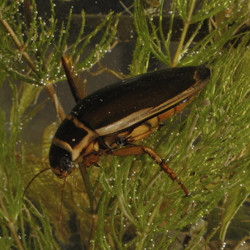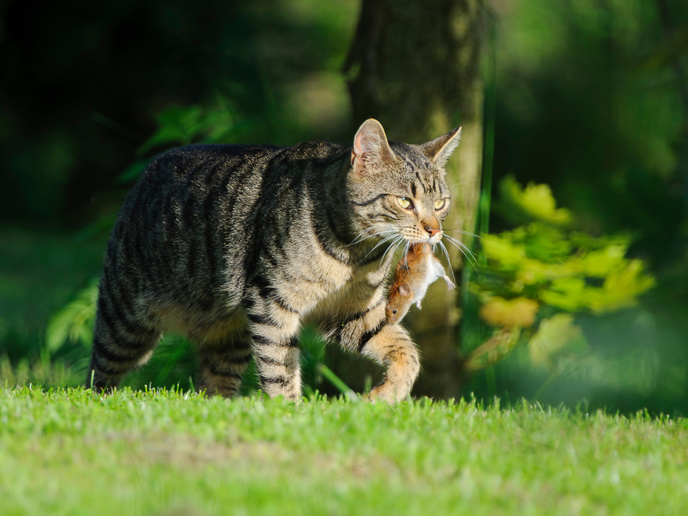Importance of size in freshwater insects
The AQUAMOD project developed size-based models of population dynamics and life history evolution for predatory freshwater insects living in small fishless bodies of water. Laboratory experiments were conducted to determine the correct model parameters and test their applicability to life history traits in predatory freshwater insects. Three types of insects representing the top predators found in stagnant water were studied: true bugs, diving beetles and dragonflies. The interactions among these organisms and their impact on community structures are not fully understood. However, they are well suited to studies concerning the affect of body size on individual life histories and food web interactions. This is because these insects span a range of body sizes and show a range of adaptations to their aquatic environment. A case study was conducted on a water beetle community. It showed that survey methods widely used to measure freshwater macro-invertebrates differ greatly in their ability to measure different body sizes. Therefore, combinations of two or more different methods were used to record size range and community structure in species-rich habitats. Computer simulations were also used to pinpoint the best sampling techniques. These can then be used in future studies to provide cost-efficient biodiversity assessment of aquatic insects and other freshwater invertebrates in small fishless bodies of standing water. Laboratory and field experiments were conducted to explain the relationship between body size and other factors in predator–prey interactions. A study of multiple predators and their most common types of prey revealed that food webs in small fishless water bodies are highly connected. It was also shown that similar sized predators living in similar sized microhabitats share similar diets. Project results were used to support a suite of models, including one that investigated the consequences of cannibalism on population dynamics. They were also used to support a model of life history implications of the scaling between body size and growth for life history evolution. In addition, results were used to model the implications of size on species dispersal. Data on aquatic insects were also included in a comprehensive overview of individual responses to predation risk. AQUAMOD outcomes improve understanding of aquatic ecosystems. This will help scientists mitigate the adverse effects of human influence on freshwater habitats.







